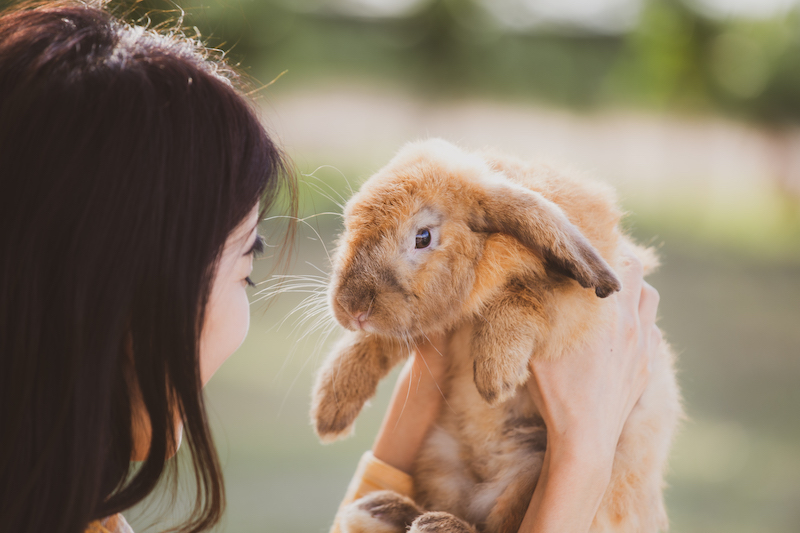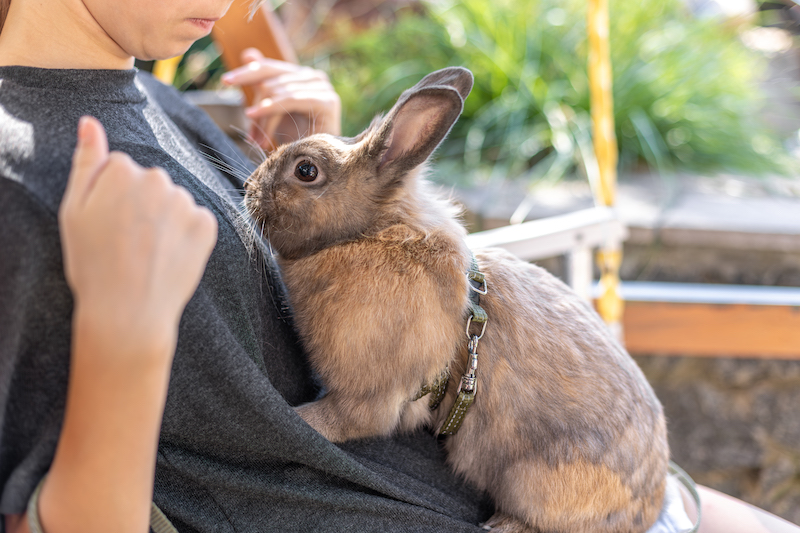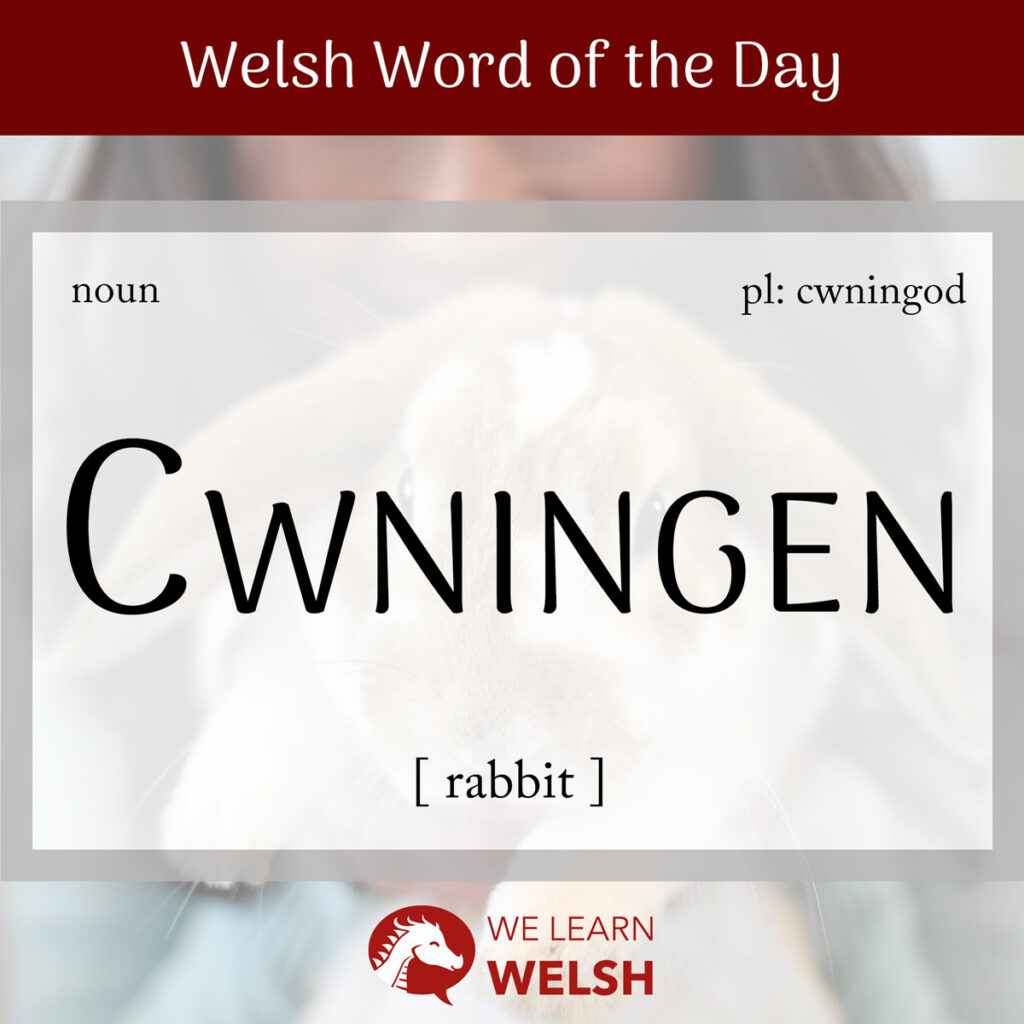Rabbits are ubiquitous in popular culture, entertaining us for decades through the zany antics of Bugs Bunny, the endearing charm of Peter Rabbit, and the tardy, pompous nature of the White Rabbit from Alice in Wonderland. But what do the Welsh call this adorably fluffy creature, which ranks fourth as the most popular pet after dogs, cats, and goldfish? The answer is cwningen!
Cwningen is a feminine noun, and its plural form is cwningod. It originally served as the singulative of the now-obsolete collective noun cwning (“rabbits”), which has an alternative form, cwnig. The term cwning was borrowed from the Middle English conynges, the plural of conyng, which itself came from the Anglo-Norman conil, ultimately tracing back to the Latin cunīculus. You could say that tracing the etymology of cwningen is much like travelling down a rabbit hole itself!
Cwningen undergoes the following soft, nasal and aspirate mutations. Because it is a feminine noun, c will always soft mutate to g after the definite article y (the).
Soft mutation
gwningen
Nasal mutation
nghwningen
Aspirate mutation
chwningen

A male rabbit, also known as a buck rabbit in English, is called a bwch cwningen, while the female equivalent – a doe rabbit – is known as a cwningen fenyw.
Mae’r gwningen yn neidio yn y glaswellt.
The rabbit is jumping in the grass.
Undomesticated rabbits live in a network of interconnected tyllau (burrows) known as a cwningar (warren), while pet rabbits are typically housed in a cwt cwningen (rabbit hutch). Wild rabbits need to stay vigilant, though, as predators are always lurking, especially the cwningwr (rabbit hunter) who goes hela cwningod (rabbiting) for their fur and meat. Other common predators include llwynogod / cadnoaid (foxes), bleiddiaid (wolves), eirth (bears) and various adar rheibus (birds of prey).

Important:
Whereas there is just one word for rabbit in Welsh, there are multiple terms for hare. The most widely accepted across the country is ysgyfarnog, but numerous regional variations exist. These include the shortened sgwarnog, cochen in the south, cota or cwta in the southwest, pryf mawr (big insect) in the northwest, oen Melangell (Melangell’s lamb) in the northeast, and ceinach or cath eithin (gorse cat) in literary Welsh.
Perhaps one of the most beloved rabbits in popular culture is the Easter Bunny, known in Welsh as either Cwningen y Pasg (Easter Rabbit) or Bwni’r Pasg (Easter Bunny).
Mae Bwni’r Pasg yn cuddio’r wyau.
The Easter Bunny is hiding the eggs.

Before we wrap up this article, let’s take a moment to explore the different Welsh words associated with hopping. You can use any of the following terms: hopian, hercian, or sboncian. It goes without saying that the last one is my favourite!

